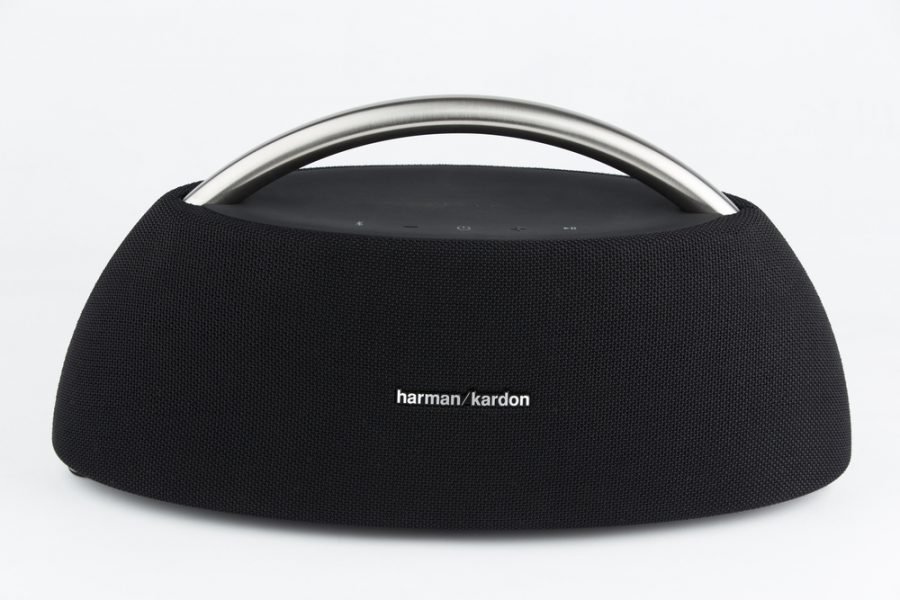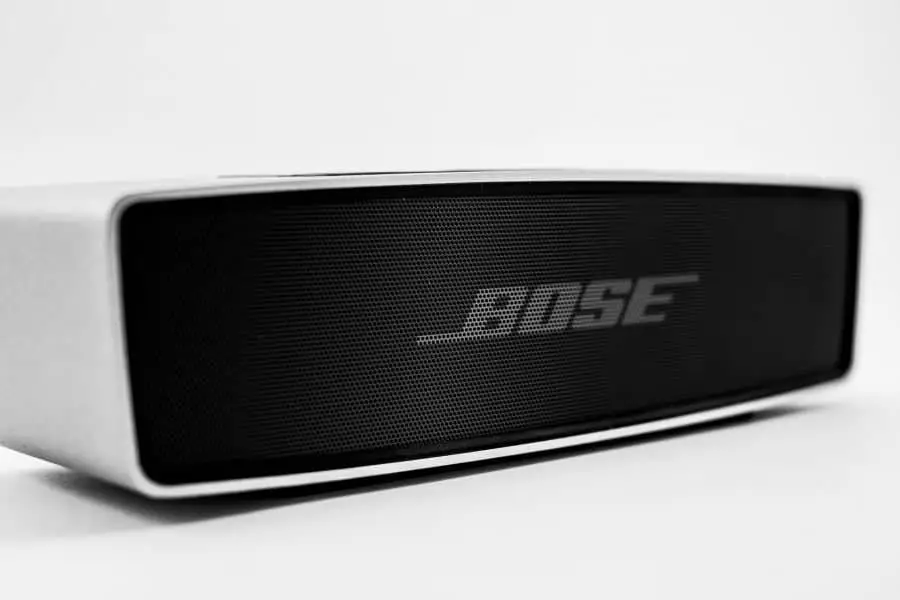In the headphone and speaker manufacturing industries, Harman Kardon vs Bose are two of the biggest names you can find.
You can’t go wrong by going with one of these brands but deciding which one to go with can be difficult when you need to choose between two industry leaders.
Since I’m comparing two brands, I have a lot of ground to cover and will be giving a general idea of how their products perform.
In talking about each brand, I’ve outlined how each one performs across a variety of purchasing factors.
This means you can jump to factors like cost or the portability of their products if you’re looking for specific qualities.

Harman Kardon
Harman Kardon has almost a decade on Bose, being founded in 1953.
Since then they’ve established themselves as a leading electronics brand, changing with the times until now, where they offer a wide selection of speakers for domestic and professional use.
Check out my overview of Harman Kardon below so you can see how it measures up to Bose and other similar audio brands.
Sound Quality
Harman Kardon, as well as Bose, is an audio company, so the sound quality of their products should be your first consideration.
Nowadays, some of the hottest-selling products that Harman Kardon moves are portable Bluetooth speakers, so I’ll take a look at their sound quality to gauge Harman Kardon’s audio devices.
After all, their performance with portable speakers is probably the baseline audio quality that the brand as a whole will be capable of.
As a general rule, Harman Kardon speakers are more directional than the speakers you’ll find from Bose.
That isn’t to say that there isn’t 360-degree sound with some of the more advanced Harman Kardon models, however.
The by-ear sound quality between both brands is otherwise matched, I’d say, so there isn’t much to speak about in terms of the difference between the two.
The main difference between these two brands is their bass performance. Bass is measured in two parts, quantity and quality.
This means how much bass is produced and the depth of that bass, as well as its time accuracy.
Harman Kardon speakers have more bass when compared to the mid- and high-range frequencies, which is why their speakers tend to be better for electronic dance or hip-hop music.
Sometimes Harman Kardon speakers come with subwoofers too, like their SoundSticks, which improve the overall sound quality.
Bose hasn’t got a brand equivalent of this for smaller speaker models, Harman Kardon just slightly takes it if you’re looking for bass performance.
Casing and Pairing Options
Portable speakers can only be so durable when it comes to their casings, but it must be said that Bose tends to deliver a more consistent build quality over Harman Kardon.
For basic domestic use, however, the difference isn’t substantial, and you shouldn’t have any problems with the average Harman Kardon speaker.
Most Harman Kardon speakers are made with plastic, while the speakers themselves have grilles that are shielded by fabric.
This isn’t as durable as plastic or light metal, that goes without saying, but Harman Kardon does have a much wider range of casing types and build designs for their products over Bose.
Harman Kardon beats Bose when it comes to the range of colors available too, so if you want a speaker to fit into a specific décor then you’re likely to find a better fit with them than Bose.
Harman Kardon’s speakers, particularly their portable Bluetooth ones, usually have around four to five colors for you to choose from.
Speaking of Bluetooth, Harman Kardon speakers are easy to pair with other devices thanks to the brand’s multi-pairing function.
True to the name, this allows you to connect to two devices at once, so you’re not limited to just one.
Most speakers only have Bluetooth as a connectivity feature, though you should pay attention to the physical ports that are built into the casing.
Some Harman Kardon products lack the customary 3.5mm port or basic Wi-Fi connectivity.
In terms of how much space they take, Harman Kardon speakers tend to take up more room. This means you’d prefer a Bose speaker if you need a space-efficient product.
Portability
Portability should be important too, While you’re looking at the physical properties of Harman Kardon speakers. You should consider the spatial design and the weight of the products each brand puts out.
Needless to say, lighter speakers are easier to move. Harman Kardon speakers also tend to have carrying handles that are great for portability. Bose lacks these, so I’d say Harman Kardon wins out if portability is your main concern.
Control Interface
Harman Kardon speakers are quite simple to use, preferring to stick all of the important buttons on top of their products and close to one another.
That said, Bose tends to do the same and there’s little comparison to be drawn from the two. There’s more variability between separate products than the two brands, so I’d say this is a tie.
Battery Life
The same can generally be said for battery life, too. The battery life of both Harman Kardon and Bose products depends on the individual speakers instead of the brand.
I’d say that the average Harman Kardon Bluetooth speaker will get you about eight hours of sound if fully charged.
Cost
Being two of the largest audio system providers in the States, Harman Kardon and Bose field a lot of products at a lot of different price ranges.
If you want to crunch the numbers, Harman Kardon speakers tend to be cheaper, but this is strictly a generality that may not apply if you’re after a high-end Harman Kardon product.
You can compare specific products, like Harman Kardon’s portable Bluetooth speakers, the Onyx Studio line, to Bose’s equivalent Soundlink line, and the Onyx Studio speakers still tend to be cheaper.
Additional Features
If you’re not bothered with the quality of sound, sometimes it’ll be the secondary features that can seal the deal. Harman Kardon doesn’t beat Bose in this area, however.
Both brands have a highly popular speakerphone function, as well as compatibility with the increasingly popular voice assistants like Alexa, Siri, or Google Assistant.

Bose
Bose was founded in 1964 and have since become widely reputed for their speakers, headphones, and the audio systems that can be found inside cars. Here’s my overview of Bose as a brand, complete with some comparisons to Harman Kardon where appropriate.
Sound Quality
Bose speakers differ from Harman Kardon speakers because of their 360-degree sound. Where Harman Kardon speakers tend to be more directional, more Bose products have to surround sound that’s better for overall coverage.
The sound quality won’t degrade depending on what angle you’re at in relation to a Bose speaker. As for bass, Bose speakers have downward-pointing radiators that add more depth to the bass provided.
Casing and Pairing Options
Where Harman Kardon has more variation in their casing design, Bose has a build quality that’s more consistent and they tend to have more plastic in their casings than other brands.
If you value durability a lot, then you’ll probably prefer Bose to other brands including Harman Kardon.
Bose speakers are more plain-colored, too. You can get Bose speakers in any color, as long as that color is black. If you’re lucky and if Bose was feeling adventurous when they made the speaker, you might get the option of getting a product in white.
Bose speakers can connect to Bluetooth just as most modern speakers can, so there aren’t any worries there if you’re looking to buy from Bose.
You can connect Bose speakers to multiple devices in stereo mode, but you’ll need to get an accompanying app to use this function.
What Bose speakers have over Harman Kardon speakers is a Wi-Fi connection. Not all Harman Kardon speakers have these, whereas mid to large Bose speakers have Wi-Fi connectivity and sometimes an accompanying subwoofer.
The speakers that Bose offers are also more waterproof than Harman Kardon’s, so they tend to be better if you want tech that you can use outside where they may get exposed to water.
Portability
Bose stock a wider selection of larger speakers, so this depends on the individual products you get. That said, by comparing Harman Kardon ranges to counterpart Bose ranges, Bose speakers tend to be slightly smaller.
Bose speakers tend to be slim and cylindrical, making them very easy and convenient to carry in your hand.
Harman Kardon speakers instead opt for a convenient handle, and I’d say they’re almost equal in terms of ease of use. This means it’s up to you to decide which one is best based on what you’d prefer.
Battery Life
Bose’s portable Bluetooth speakers have a similar battery life to those that Harman Kardon offers at approximately six to eight hours. What I should add is that the battery life will get depleted if you use the speaker a lot.
If you’re planning on getting the speaker from either brand, you should know that using your speaker at maximum volume will cut the battery lifespan down.
Cost
Harman Kardon’s products tend to be cheaper, there’s no getting around that if you had your eye on Bose. Whether it’s the simplest portable speakers they offer or sophisticated home theatre systems, Bose has consistently pricier tech on the market right now.
Additional Features
I’ve already covered how both Harman Kardon and Bose have speakerphone and voice assistant functionalities built into most of their modern products.
Where Bose stands out is that they have more wired connections, so they don’t rely solely on Bluetooth or Wi-Fi connections.

